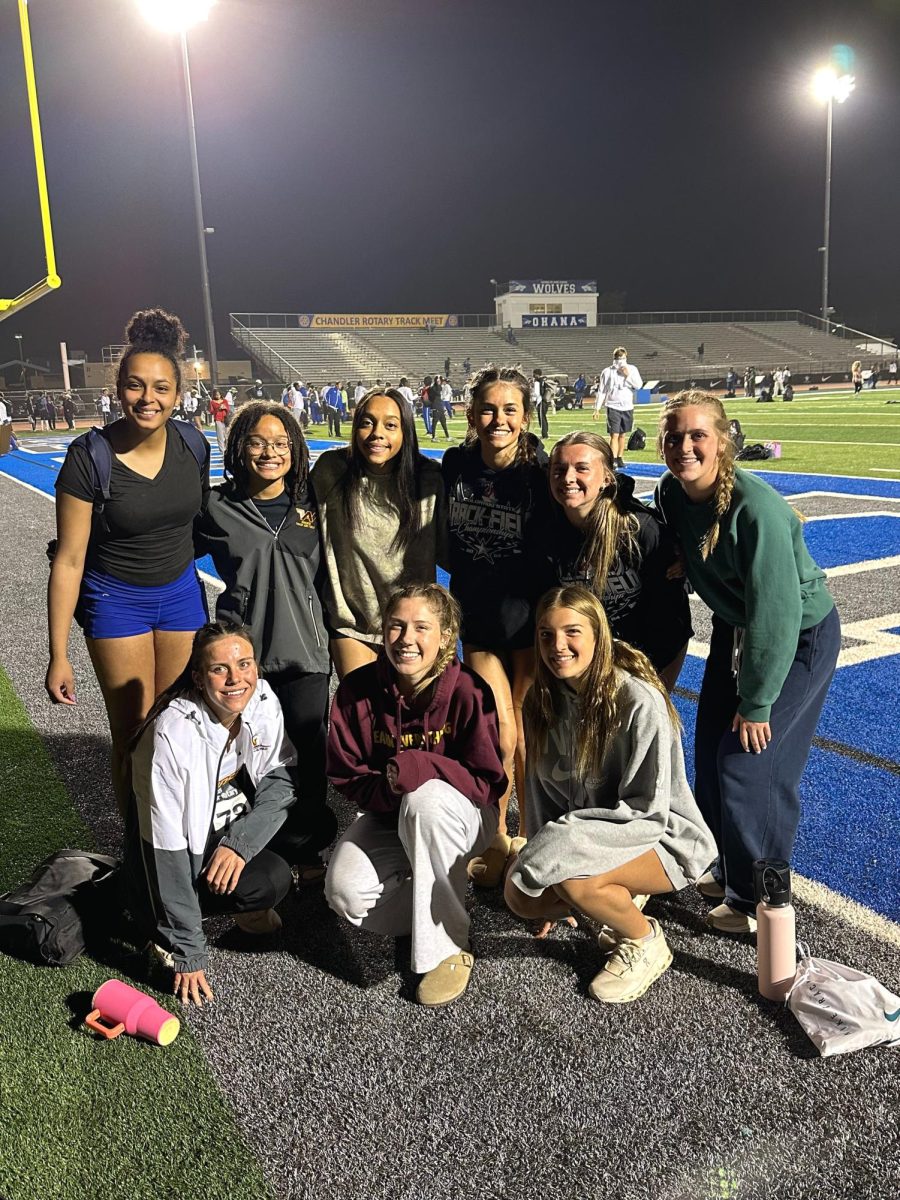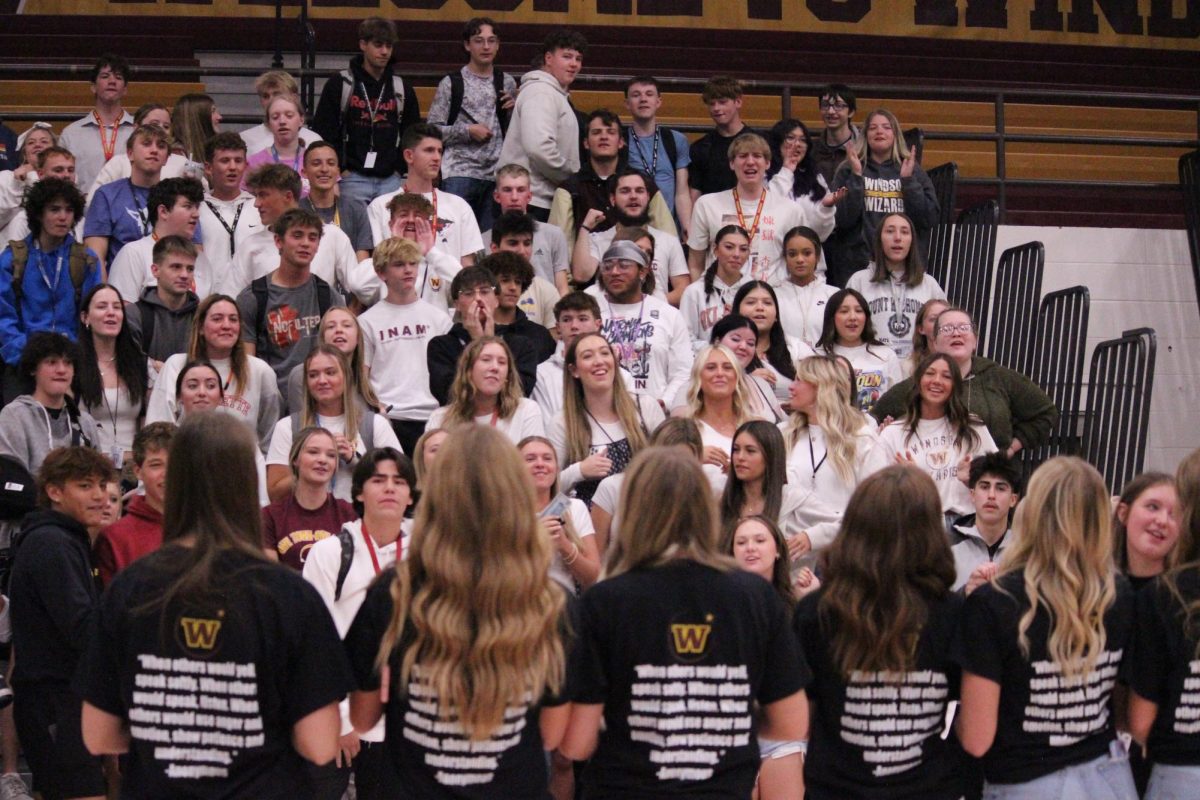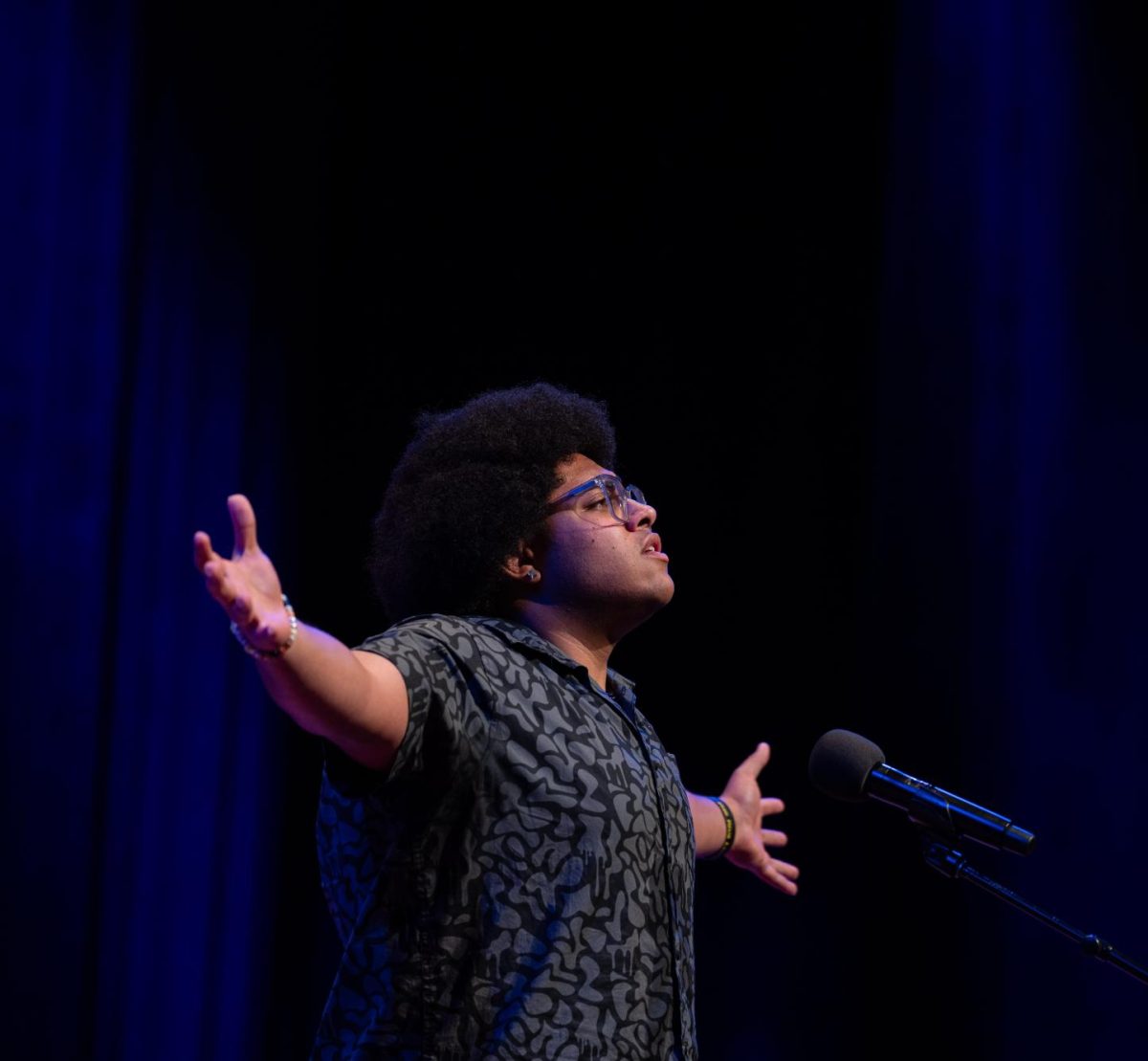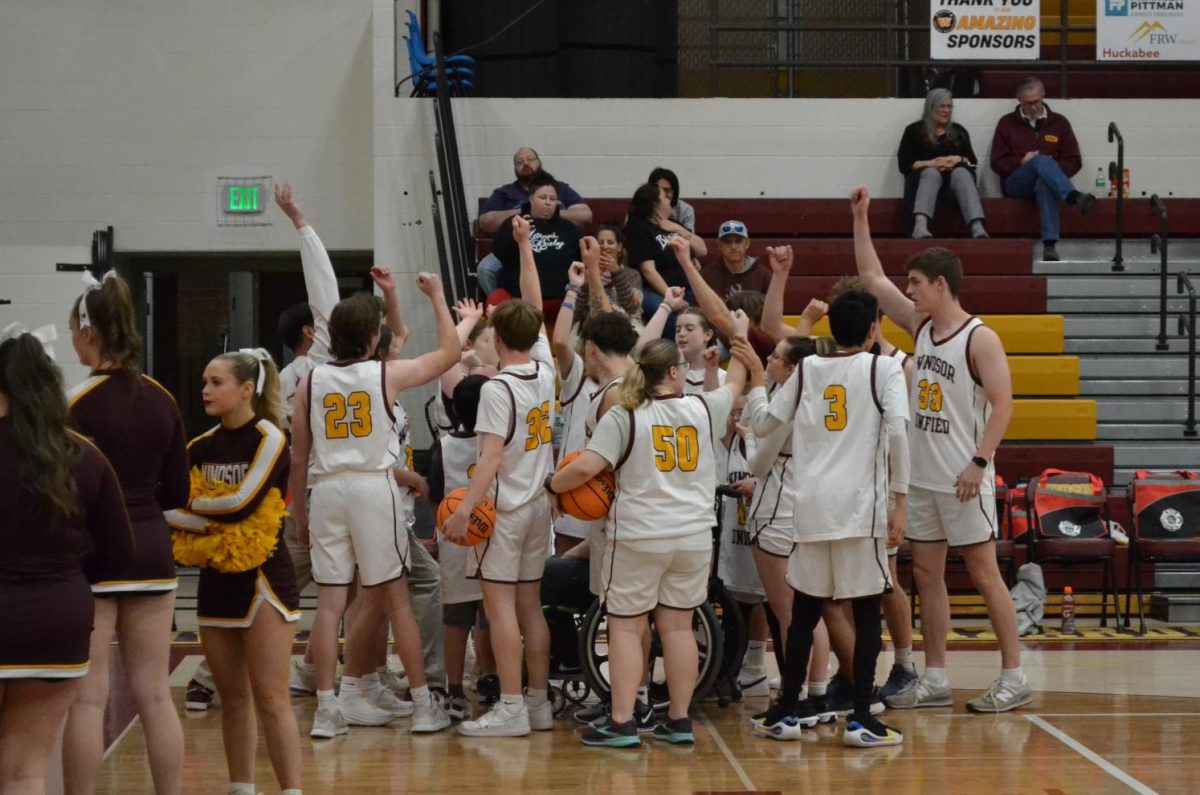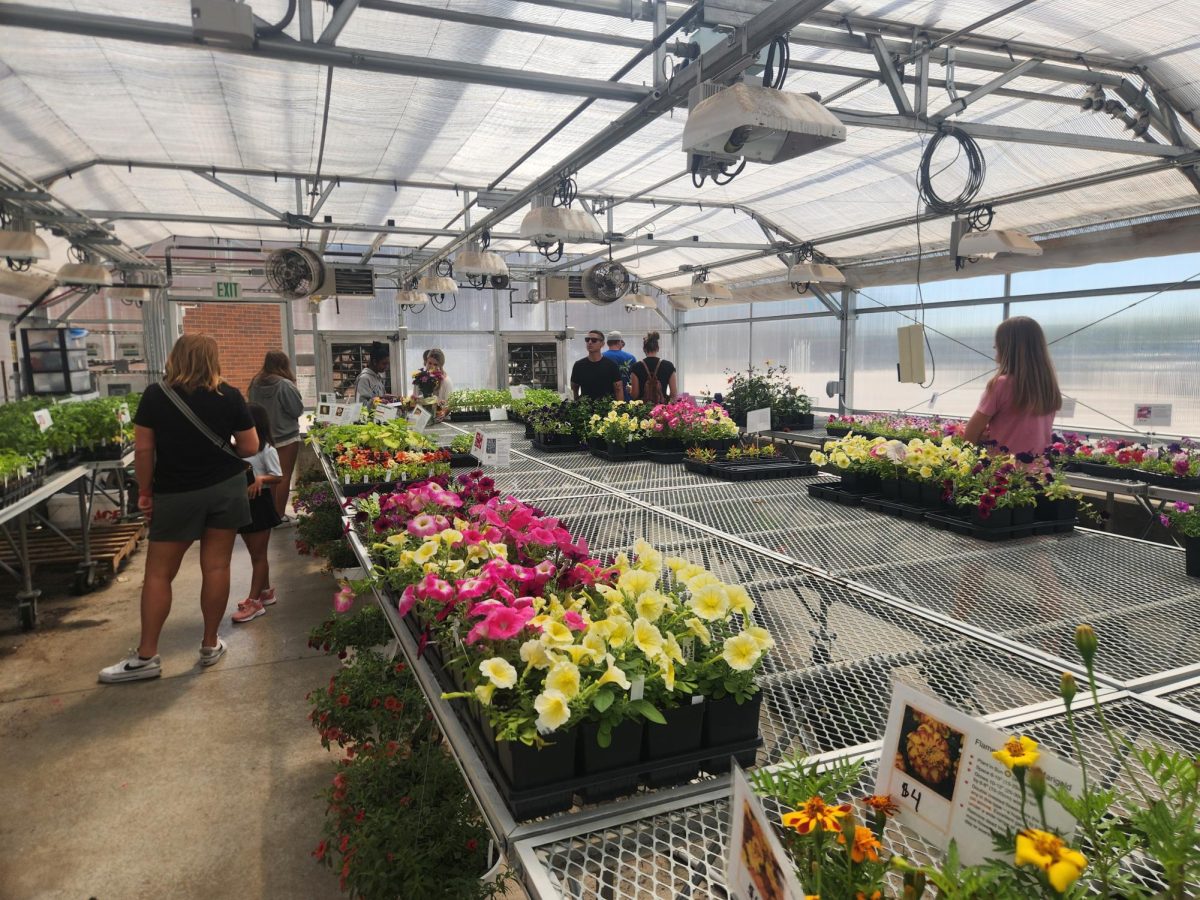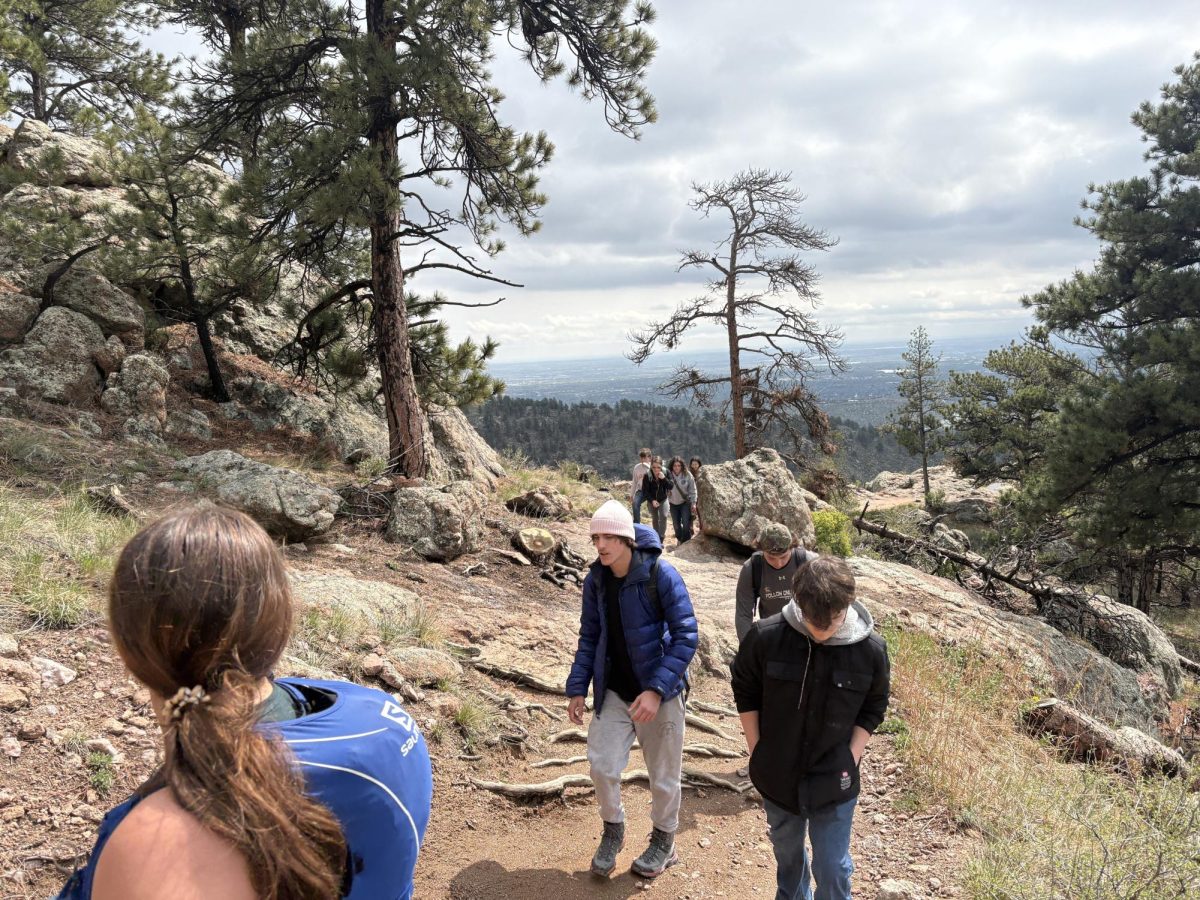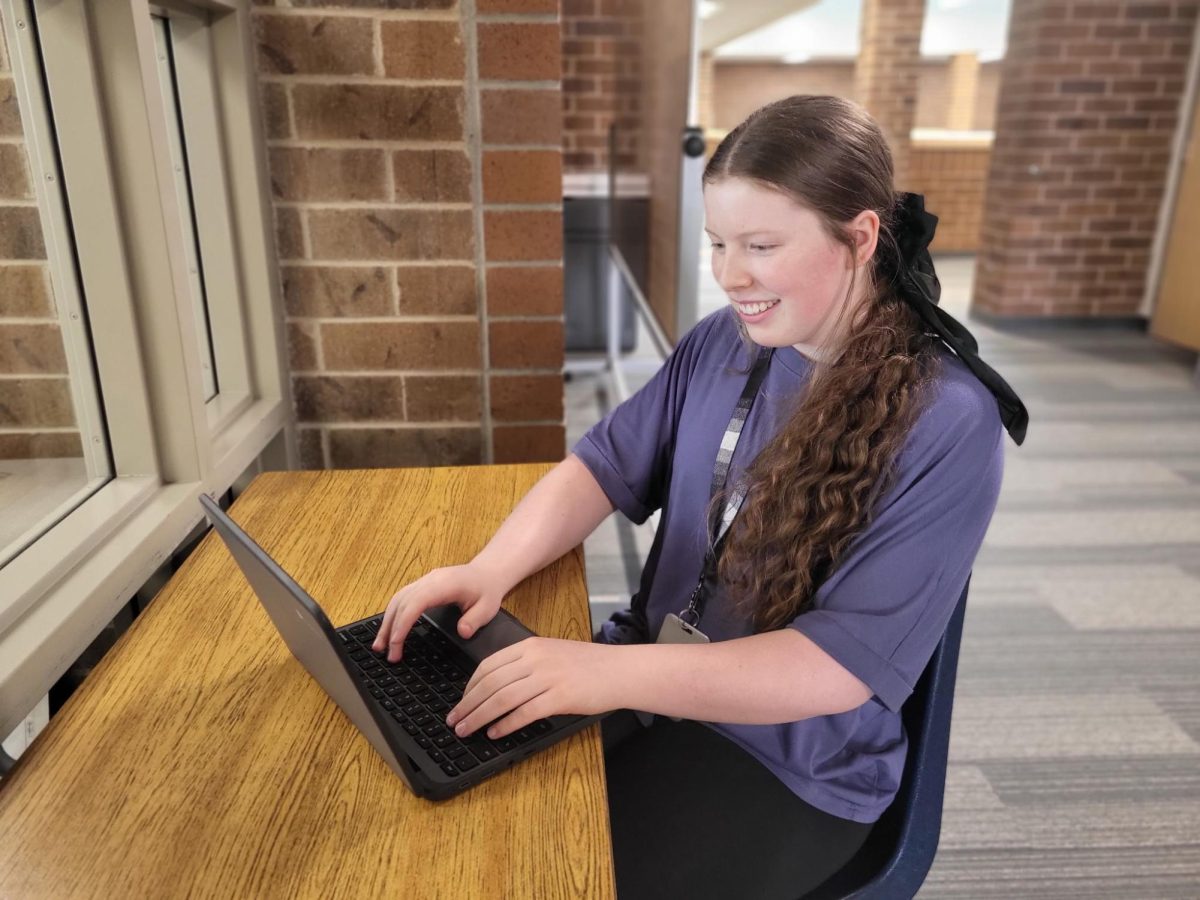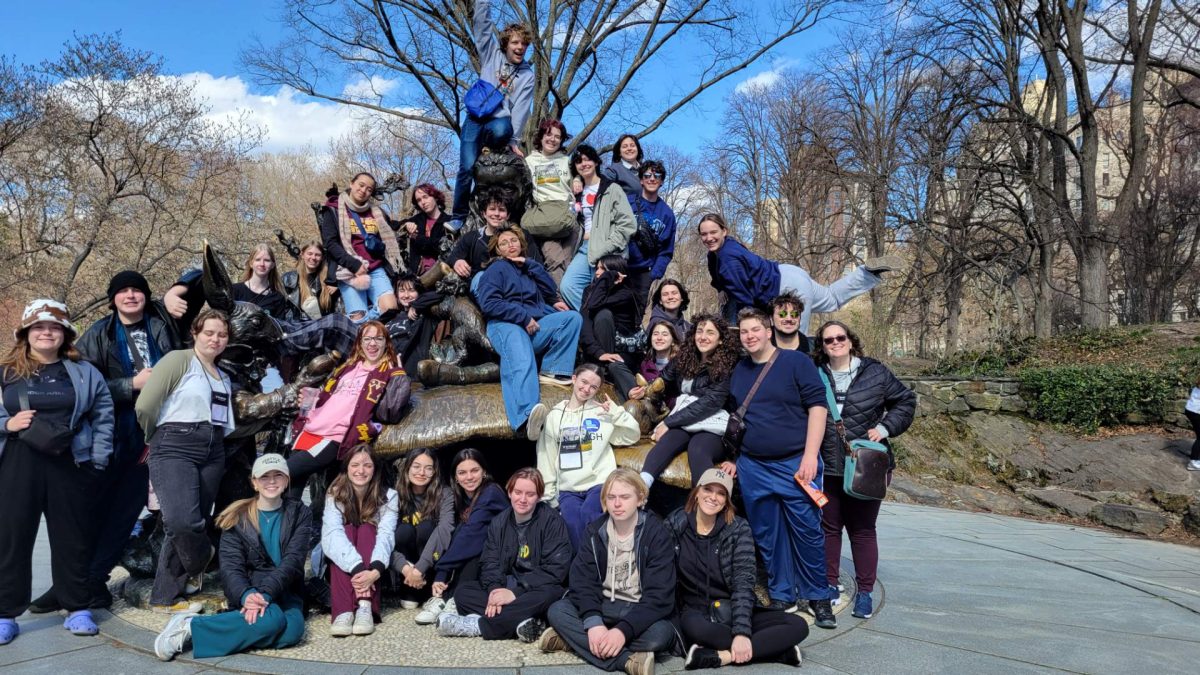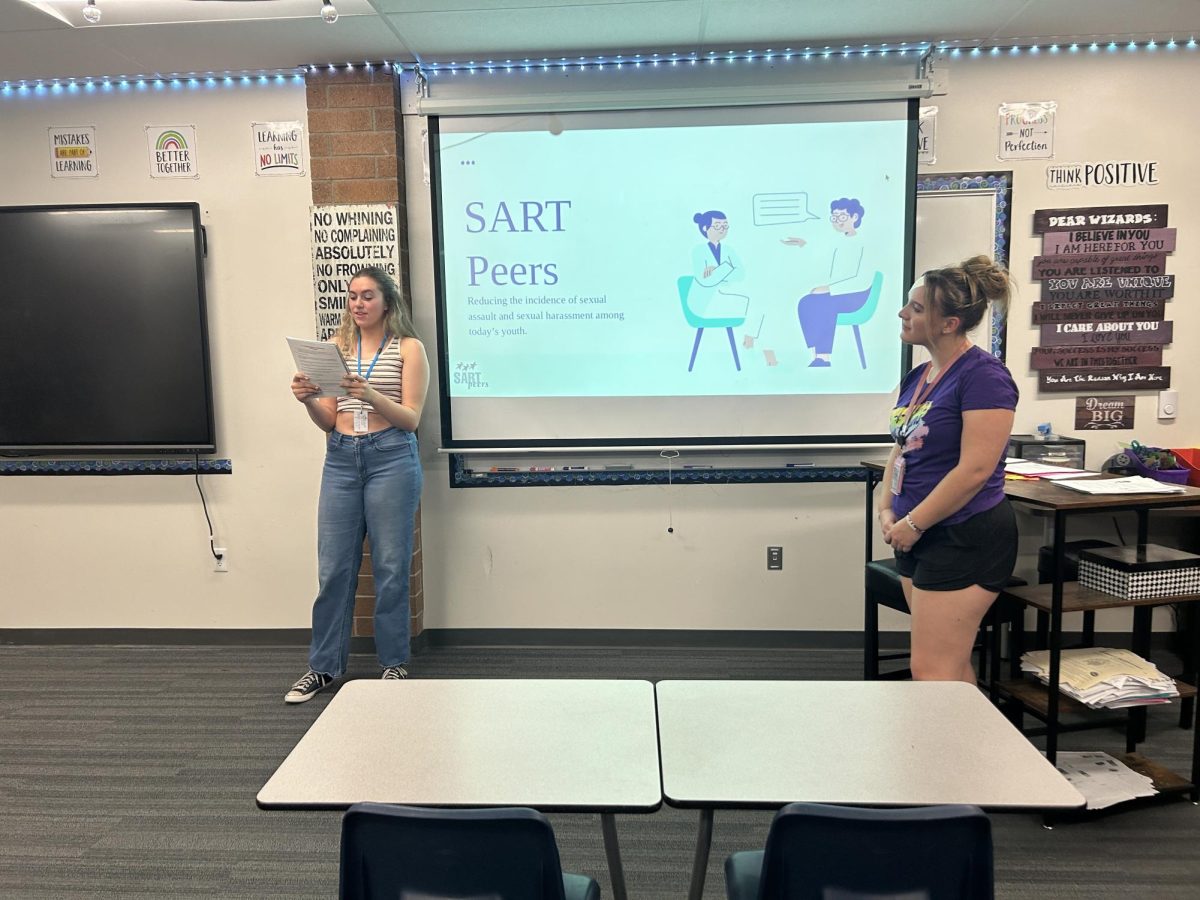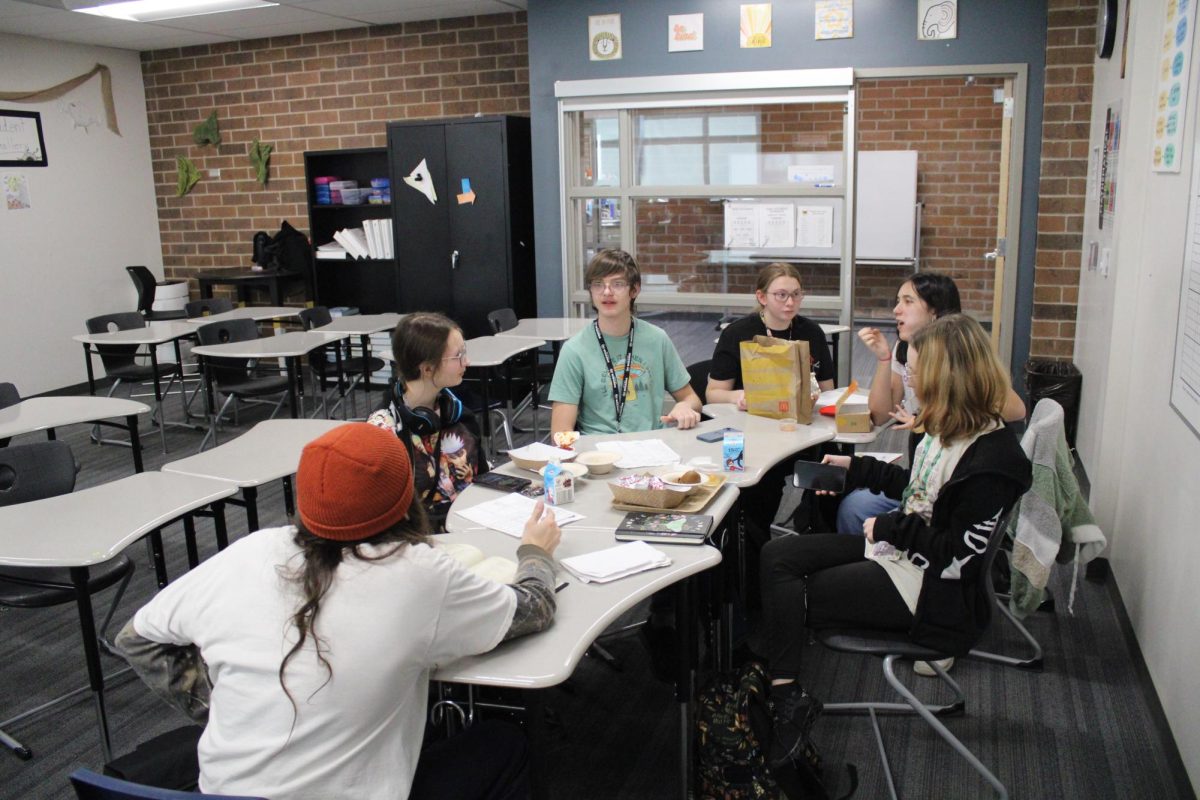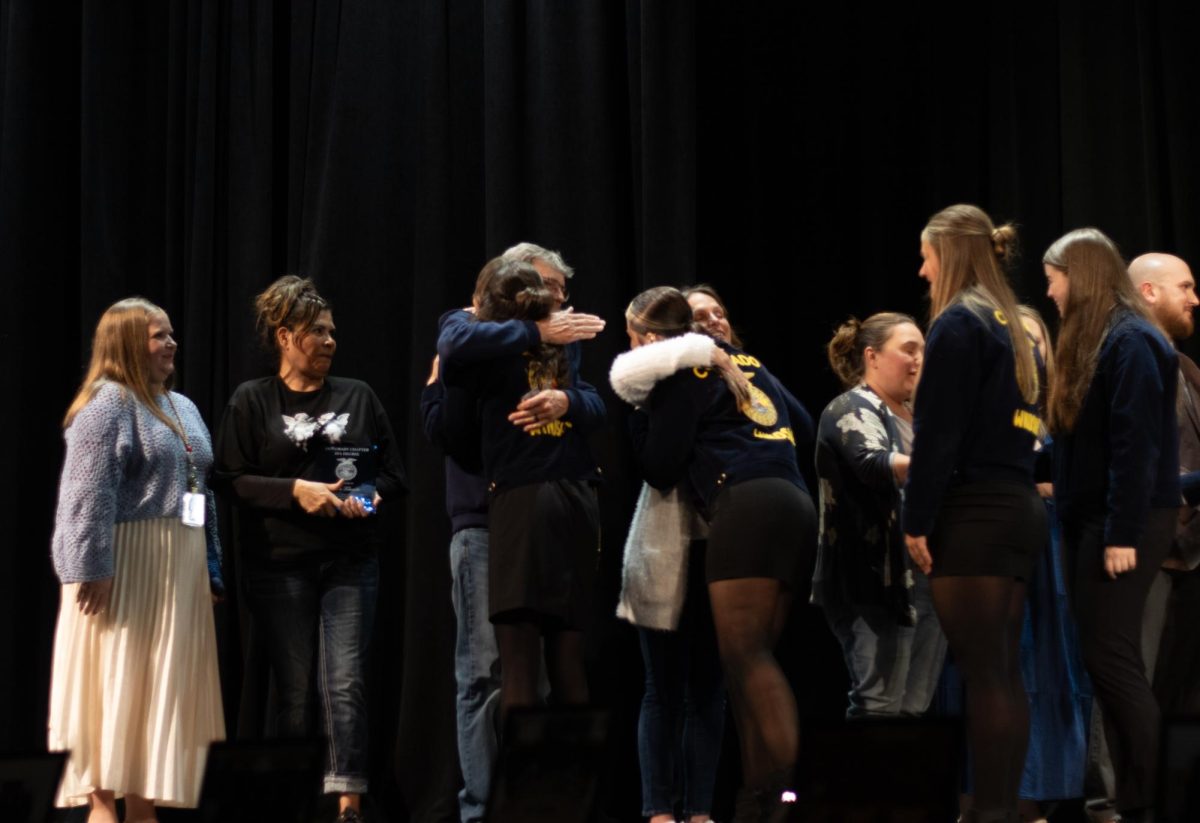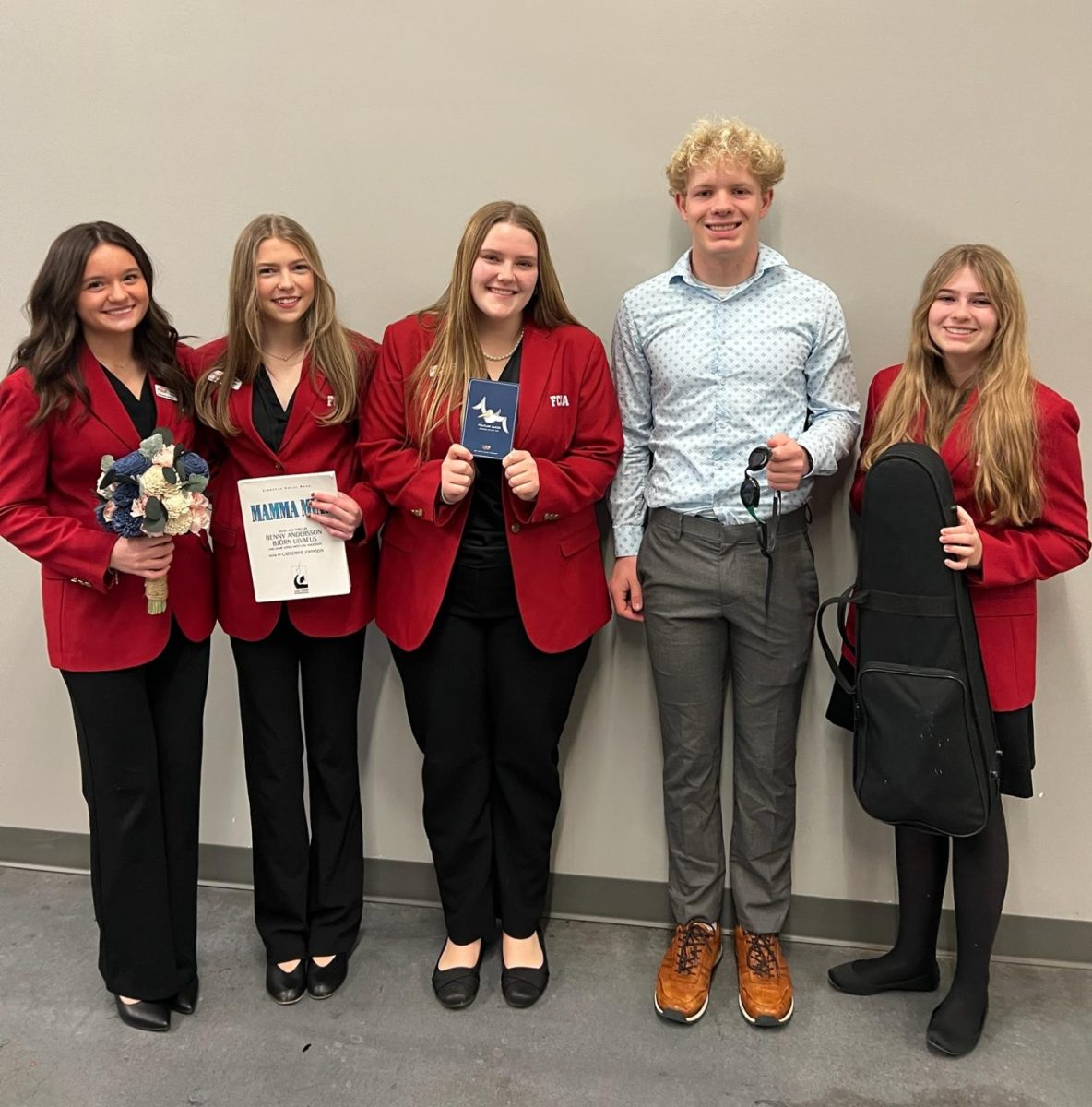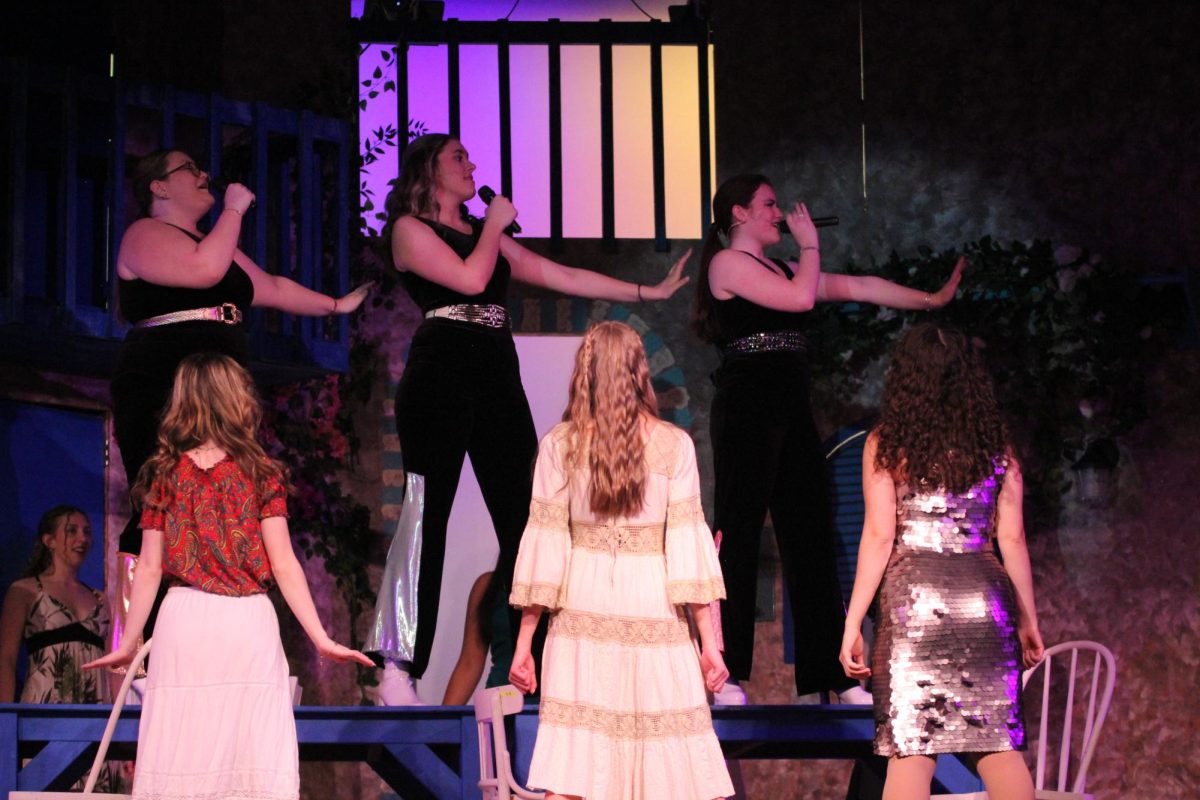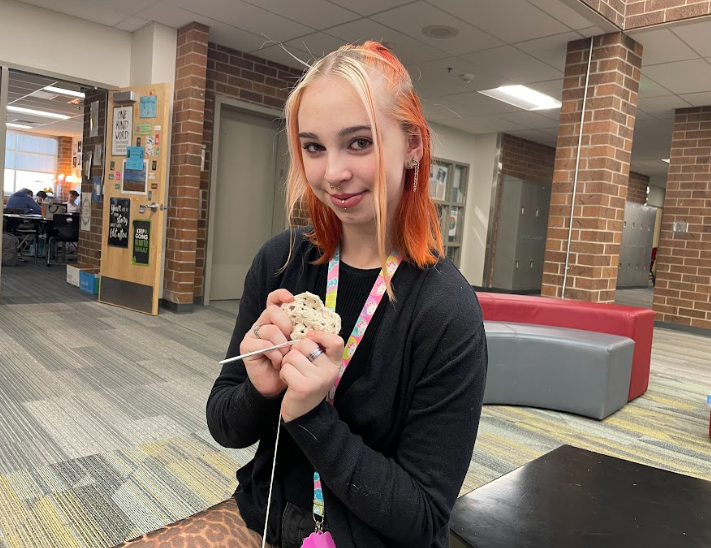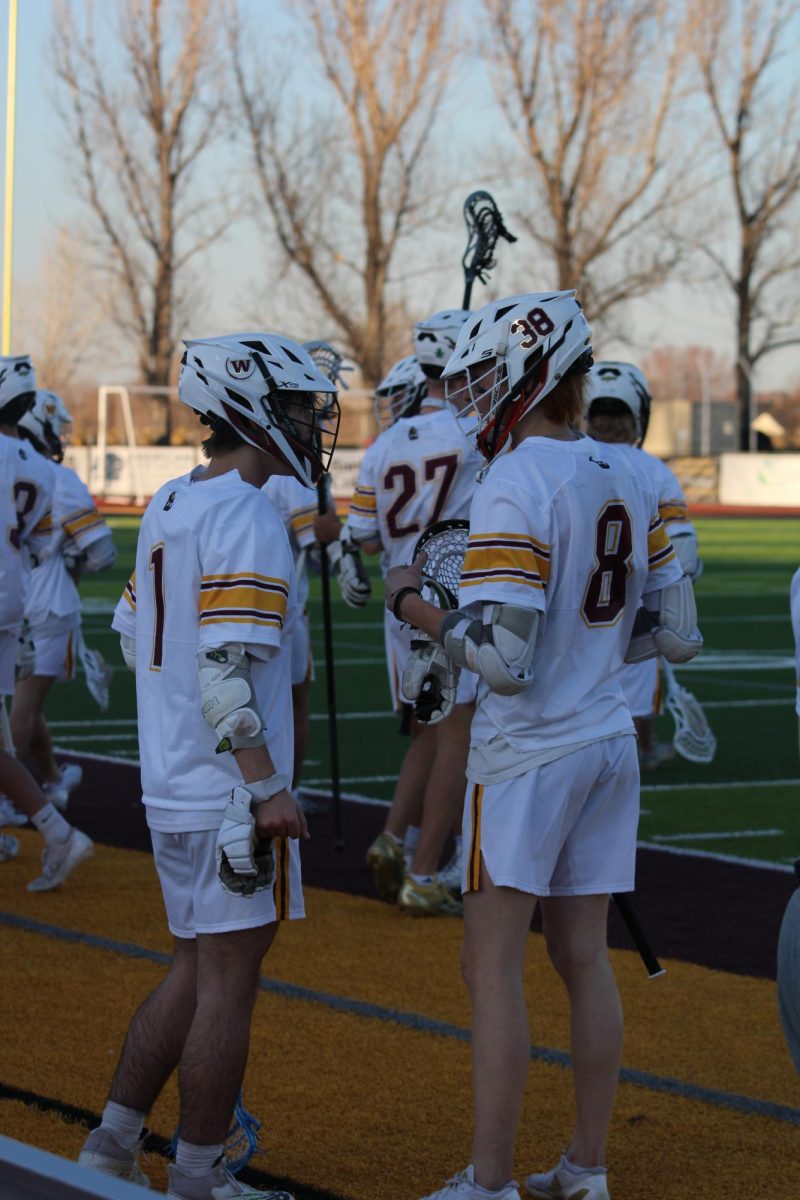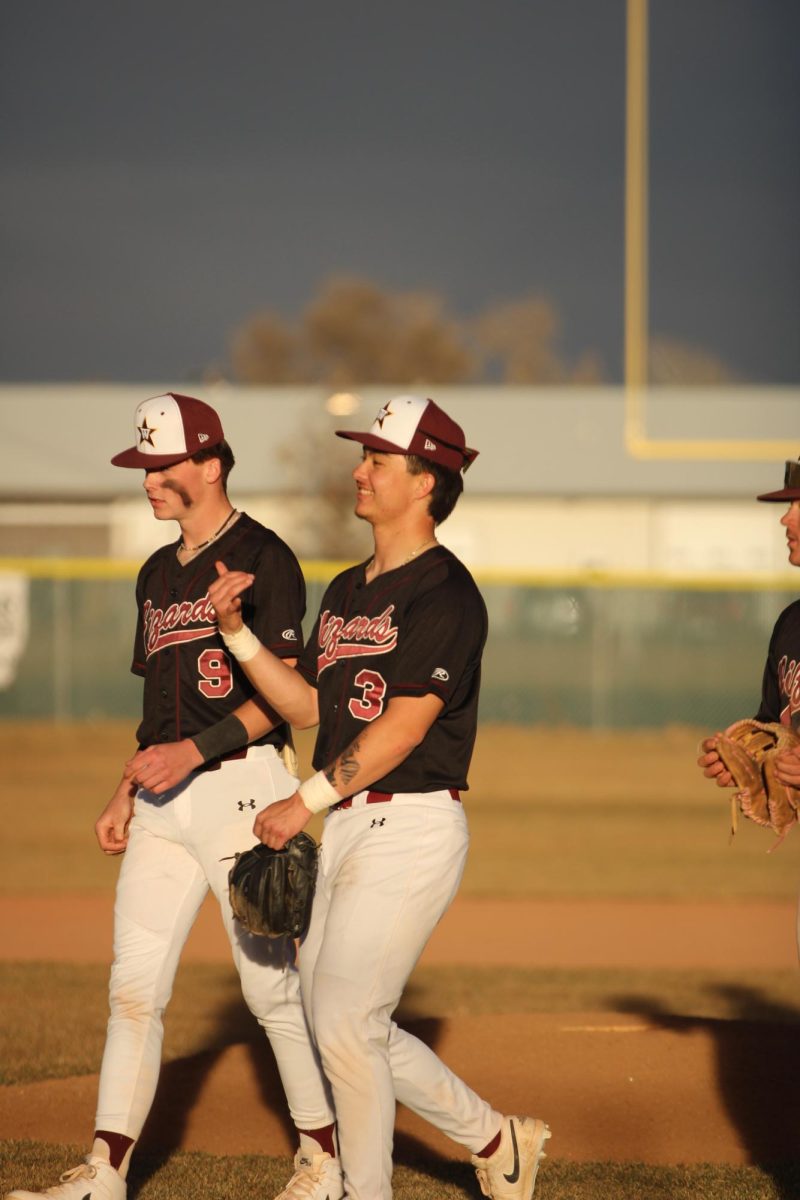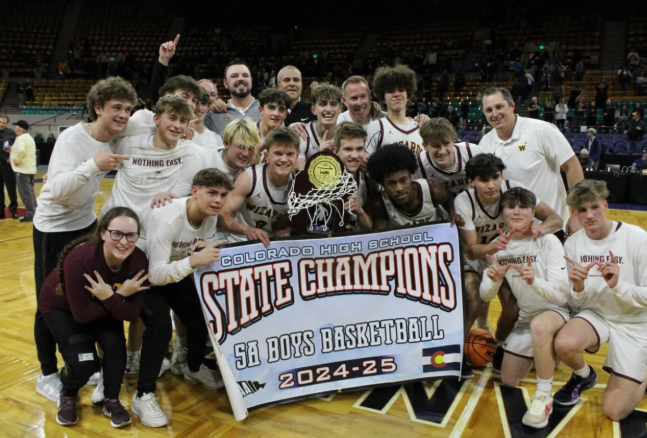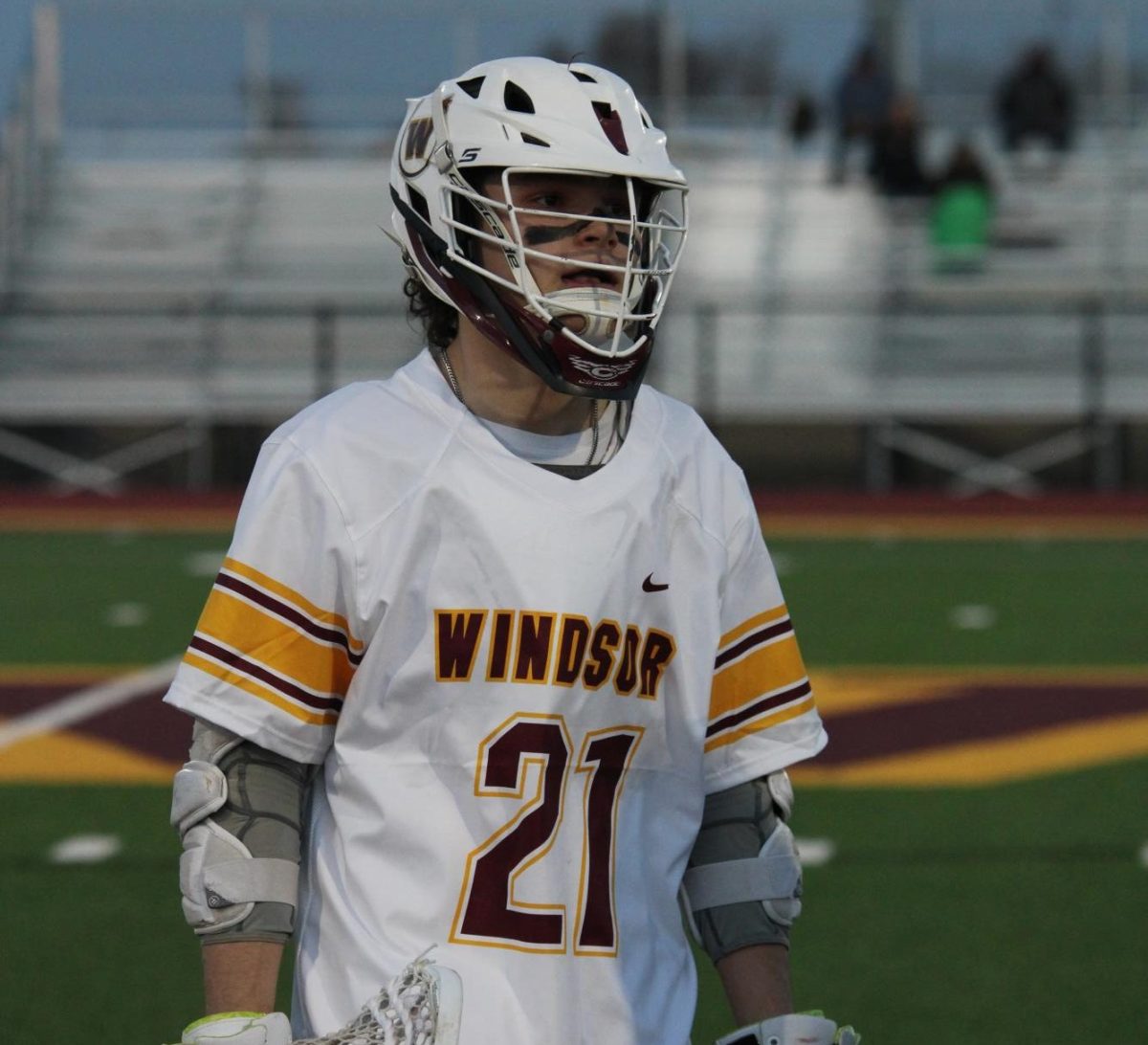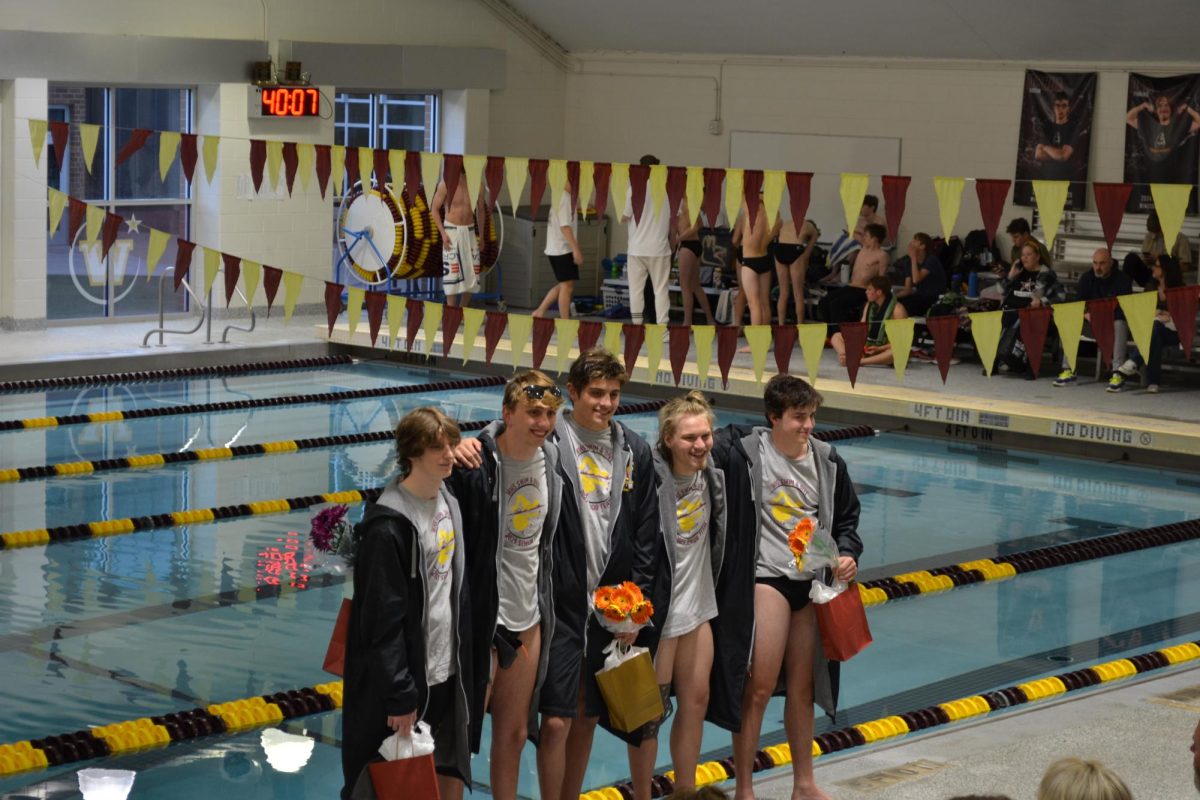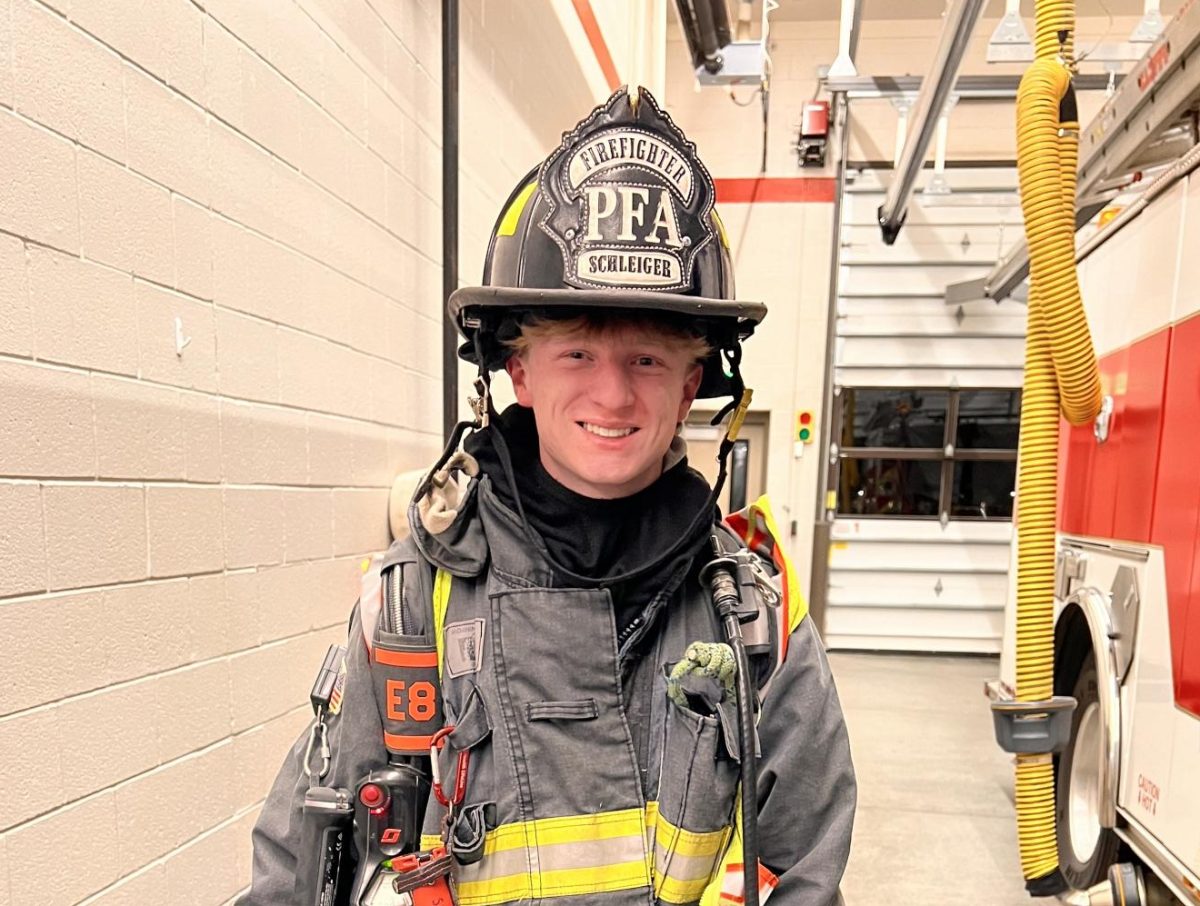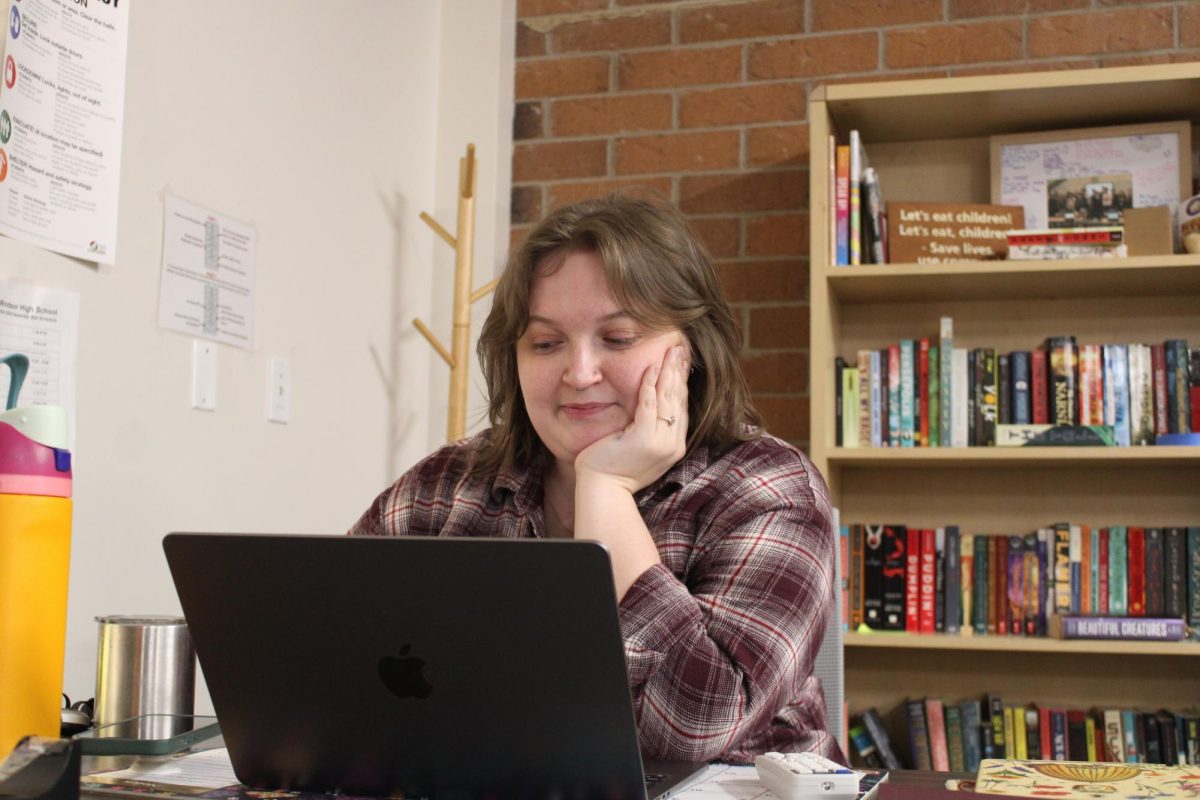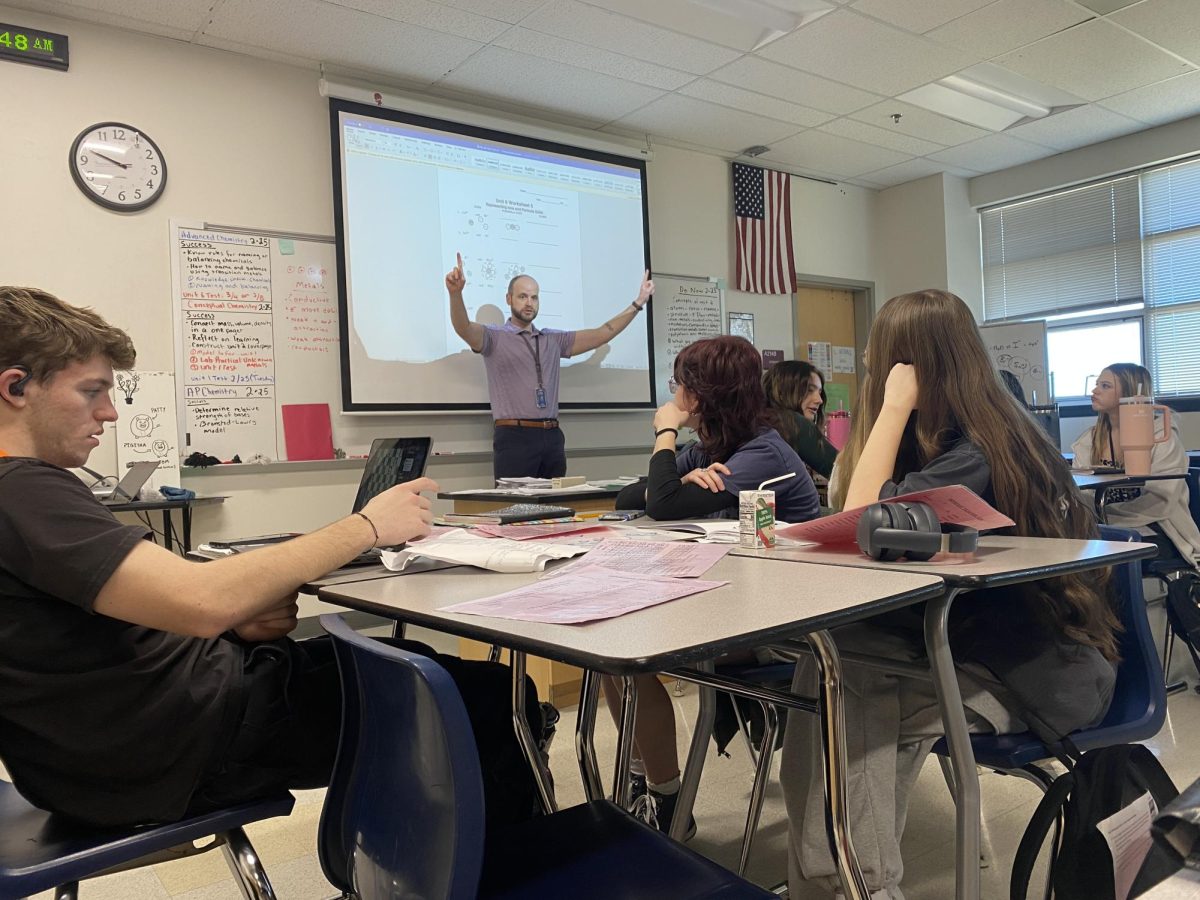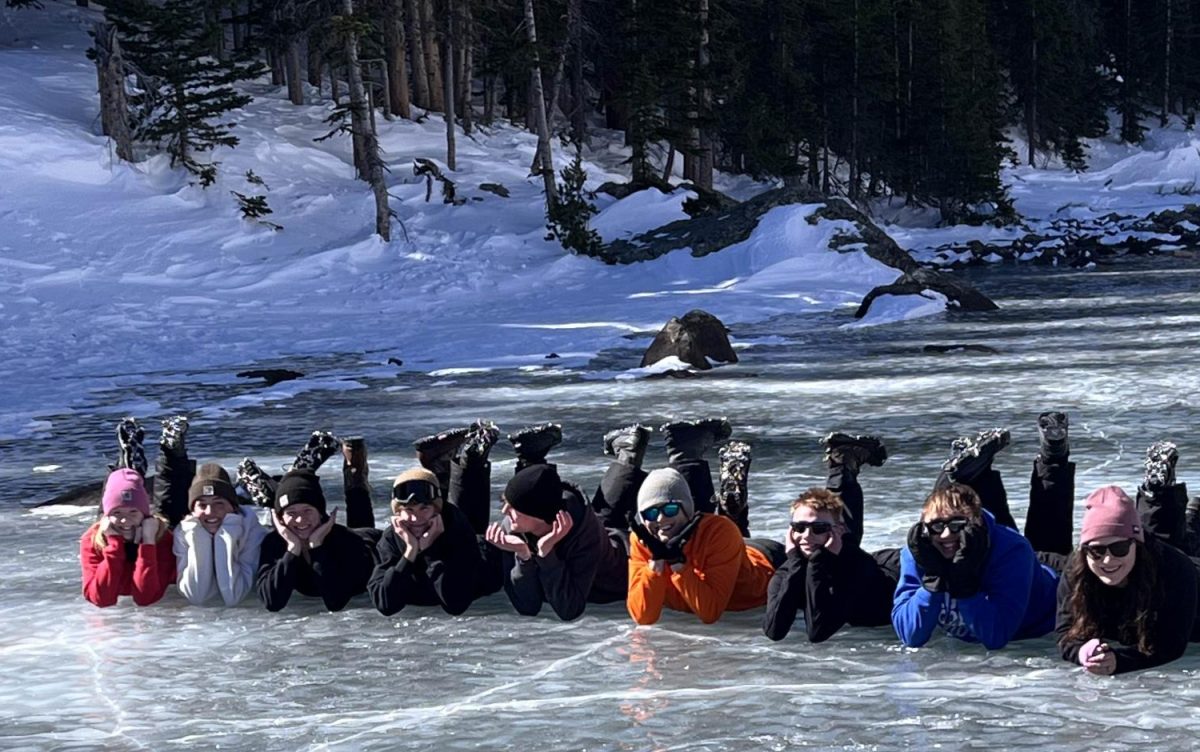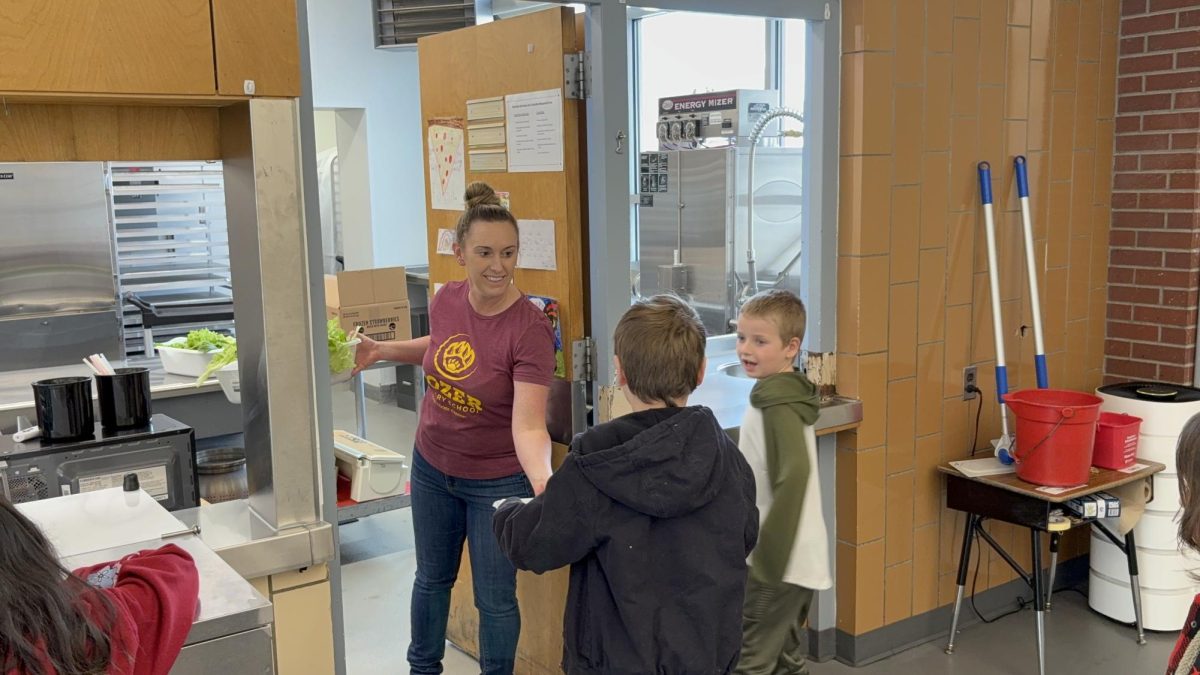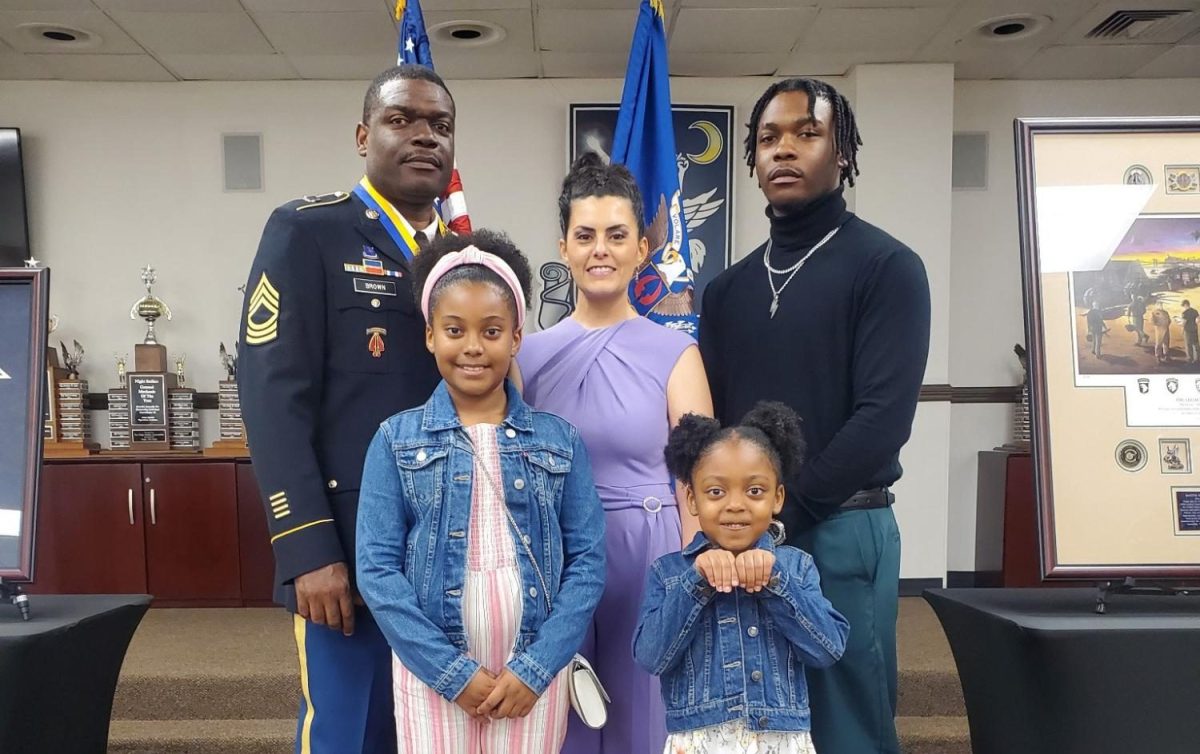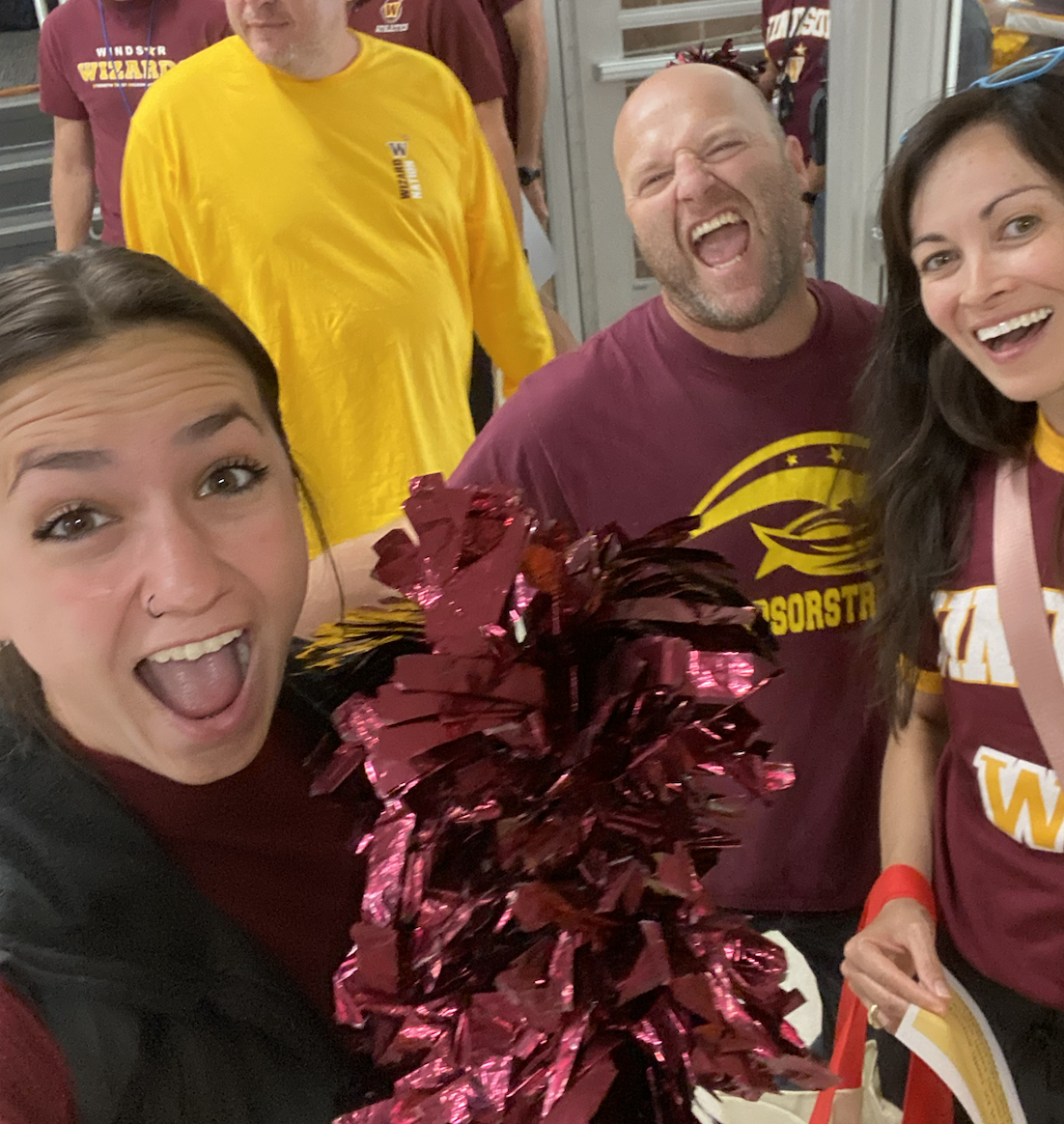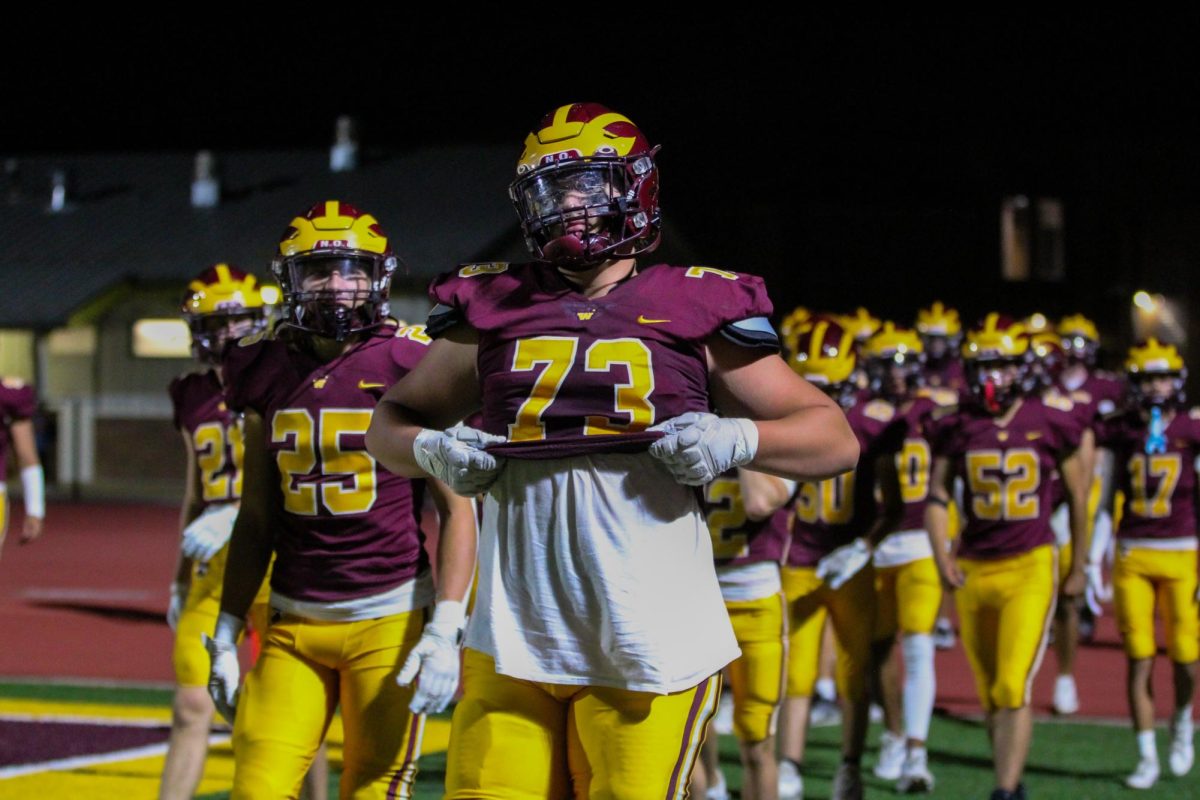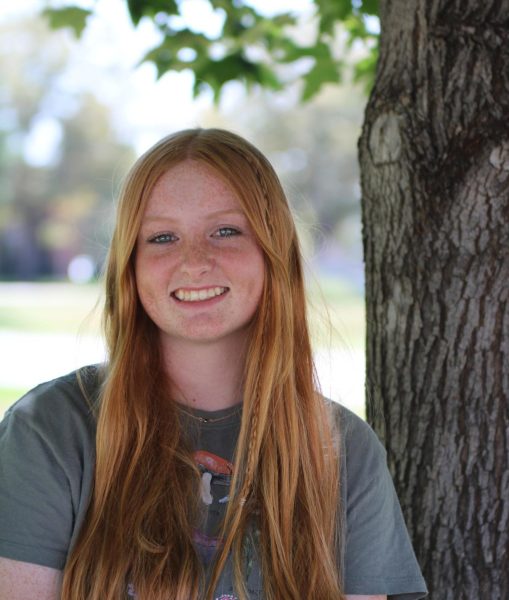Sarah Gray (staff) joined the science department right before the 23-24 school year. Though she now has one semester to her name, she is one of the youngest teachers on staff and is still learning her teaching style.
After Gray graduated from Wheat Ridge High School in 2017, she continued her education at Colorado State University. When she went into college she wasn’t sure what she wanted to do, but she ended up studying natural sciences with a concentration in biology and education.
After college she took small jobs at different schools to figure out more specifically what she wanted to do. Some of these jobs included being a math and literacy tutor at Bennett Elementary School and student teaching and then in-house substituting at Rocky High School.
“I think ever since I was younger I wanted to be a teacher and I had the giant white board and had my stuff animals — very classic — and then I got rid of that dream in high school, then circled back when I became a math and literacy tutor and I saw this little kid and as soon as they learned, I think it was, the letter ‘C’ versus the ‘K,’ the light bulb went off and that’s when I was like, ‘This is what I want to do,'” Gray said.
Gray’s mentor teacher at Rocky knew about the shortage of science teachers at WHS and connected her with Jennifer Marlow (staff). She toured the school, interviewed, liked the environment and was ultimately happy to accept the position. Since then, she has built strong relationships with her students and enjoys teaching here.
One of her favorite activities she has done with her students is a sea star dissection lab.
“I think my favorite thing was the sea star dissection even though a lot of them didn’t love it. Dissections are, like, my favorite thing in science, anything hands on. And so it was fun to let students explore that as well,” Gray said.
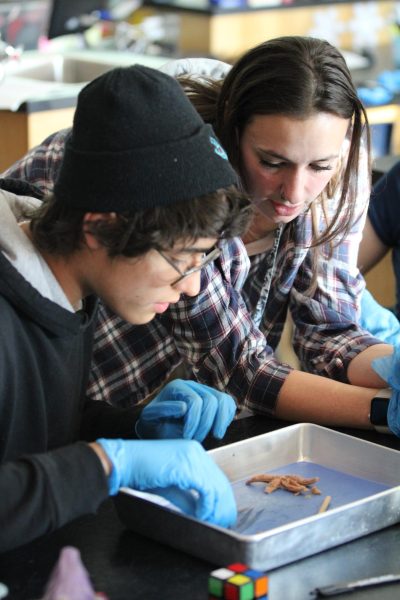
Being a younger teacher does have good and bad aspects. Gray has experienced many good but also many challenging times in her classroom.
“I think it has pros and cons. It’s really nice cause a lot of the students, it’s easier to build relationships. They are more open to younger teachers, but then it’s harder finding that fine line in between ‘I am not your friend, I’m still your teacher’ and some students might forget that and try to push boundaries because I’m younger,” Gray said.
Not only are there struggles in the classroom with rules and boundaries but also with learning what lesson plans benefit students the most and which ones don’t.
“It takes years I’ll admit it, it takes years of maturation and exposure of ‘Wow, that was a disaster,’ ‘That lab didn’t work’ and ‘Hey, this is great,’ and so it’s every year teachers are always improving … They definitely have more to grow from. They’ve got to figure out their style and their system, what works best for them and what makes for successful teaching methods for their students,” Marlow said.
Some students might think having a younger teacher will be an easy way to get around the rules or that they might not get a good education from them because the teacher is younger.
“I don’t think her teaching skills are lower than an older teacher because she does have less experience but she has more of, like, an attention to teach,” Savanna Bustillos (10) said. Bustillos is one of Gray’s biology students.
Gray likes to get her students involved in their work with hands-on activities or classroom discussions. Though there are many aspects of teaching she loves, that doesn’t mean it’s not hard at times.
For example, many studies show teachers’ weekly work hours are higher than average hours in non-teaching jobs.
National Education Association stated, “In the new national survey released this week, K-12 public school teachers report feeling overworked and underpaid. On average, they estimate working 53 hours a week — seven more hours than the typical working adult (RAND conducted a separate survey of all working adults). Only 24 percent of teachers are satisfied with their total weekly hours worked, compared with 55 percent of working adults.”
This is something Gray was aware about before becoming a teacher but didn’t expect to be completely true.
“I expected a lot of work and for the first year of teaching to be very challenging, but I don’t think I understood the extent of that work and how much classroom management and how much time that would take and then creating lessons, how much time that takes, and so I think I underestimated the workload and how much people said there was when I was coming in,” Gray said.
Even with all of these hurtles during her first semester of teaching, Gray has learned to work around them and overcome challenges she has faced.
“I love being a teacher. I think when you put the stress aside and grading aside and all of that, it’s one of the best jobs. It’s so fulfilling,” Gray said.


